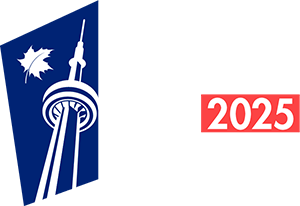How we assess commercial properties
Overview of factors affecting your property value
We use an approach called the "cost approach" to value many commercial properties. This approach assigns value based on:
- The cost of replacing the existing structures.
- Adjusting for any depreciation, and;
- Adding the value of underlying land.
In locations (primarily the GTA) where there are a lot of sales, we use a different approach, called the "direct comparison approach," to estimate current values for commercial properties. This approach looks at sales of comparable properties in the surrounding area.
Occasionally, we might use a third approach, called the "income approach," to calculate the value of a commercial property. This approach is used for income-producing properties. It requires a detailed analysis of income and expenses for the property being valued.
The factors considered in the cost approach
- Functionality and utility; what the property does and how well it does it.
- Cost to maintain the current property functionality.
- Current market value of the land.
- Depreciation; changes to your property based on age, wear and tear or lack of use.
Functionality and utility
The better a property fulfills its required functions, the more valuable it is to the owner or prospective owner.
The valuation process requires an analysis of the highest and best use, as well as a determination of how well the property achieves its current functionality.
Cost to maintain the current property functionality
To determine this cost, we take the following steps:
- We use existing records and/or complete an inspection of your property to collect physical data about its existing land and buildings (i.e. age, size, use, etc.).
- We apply our Automated Cost System (ACS) to determine the replacement cost of the commercial buildings and structures. The ACS considers the cost of labour, equipment and materials used for the primary use of the commercial property.
- The depreciation is calculated using depreciation tables varying from an anticipated 10-year useful life to 80 years. This calculation is accounts for physical deterioration. Then there are further adjustments to account for functional and/or external obsolescence.
Current value of the structure = replacement cost new – depreciation
Current market value of the land
To determine the market value of the land, we take the following steps:
- We assess the value of the land as if it were vacant. We establish its value by analyzing market sales data.
- The value of the land is then added to the depreciated replacement cost of the buildings or other improvements to arrive at the assessed value of the property.
Depreciation
Depreciation is the difference between the cost of a new building (or other improvements) and the amount a buyer would pay for improvements on existing buildings or structures.
Depreciation can be quite complex and all elements of depreciation can affect the value of your property.
Depreciation can be quantified in several ways. We identify all forms of depreciation present in the property to help us with the assessment process.
The three types of depreciation
There are three types of depreciation to consider:
- Physical depreciation; resulting from wear and tear due to use and exposure to the elements.
- Functional obsolescence (reduction in usefulness); resulting from some defect in the existing property.
- External obsolescence; resulting from adverse factors outside the property.
Both physical depreciation and functional obsolescence can be sub-divided into two types:
- Curable; it is cost-effective to fix.
- Incurable; it cannot be fixed or cannot be fixed cost-effectively.
Identifying physical depreciation
All properties suffer physical deterioration as they age. The amount of depreciation applied in the assessment depends on three factors:
- The useful life expected for the property.
- The quality of the construction.
- The effective age of the property (any reasons the property is in better or worse condition than it should be at this stage of its life).
Most commercial buildings valued on cost are assigned useful life. Useful life refers to the amount of time an asset is expected to be functional and fit for purpose - this is also known as economic life or service life. Useful life is usually measured in years, ending when the asset is unable to operate as required or can no longer be used to generate revenues. However, there are some commercial uses that tend to shorten the life of a property due to greater physical wear and tear.
- If the condition of the building or improvements is worse than expected, then a higher age variance can be applied, and the amount of depreciation is increased.
- If the building has recently been upgraded or renovated, then the effective age is lowered and depreciation can be decreased.
Identifying functional obsolescence
Functional obsolescence is usually some defect in the existing buildings or structures that makes them less valuable than a modern equivalent. There are two main forms of functional obsolescence:
- The building size, construction and/or height is not as functional as current requirements.
- Other elements of the property (e.g. design or layout) make it less efficient than more modern commercial properties.
Identifying external obsolescence
External obsolescence is a loss in value that results from factors that are external to the property itself and outside the control of the property owner.
Most commercial properties are less likely to be affected by external obsolescence than more specialized properties because they can be used for a greater variety of purposes.




